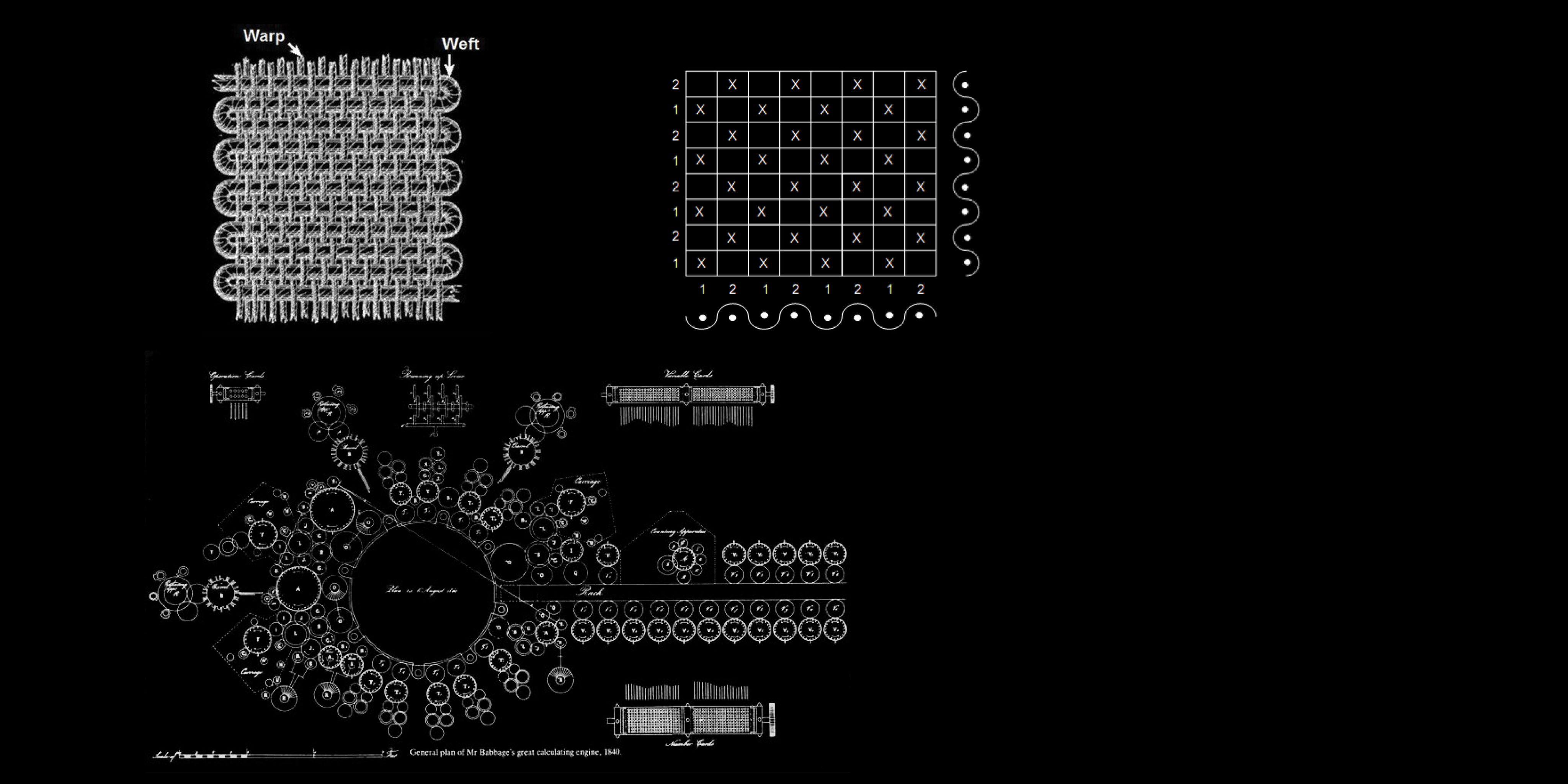
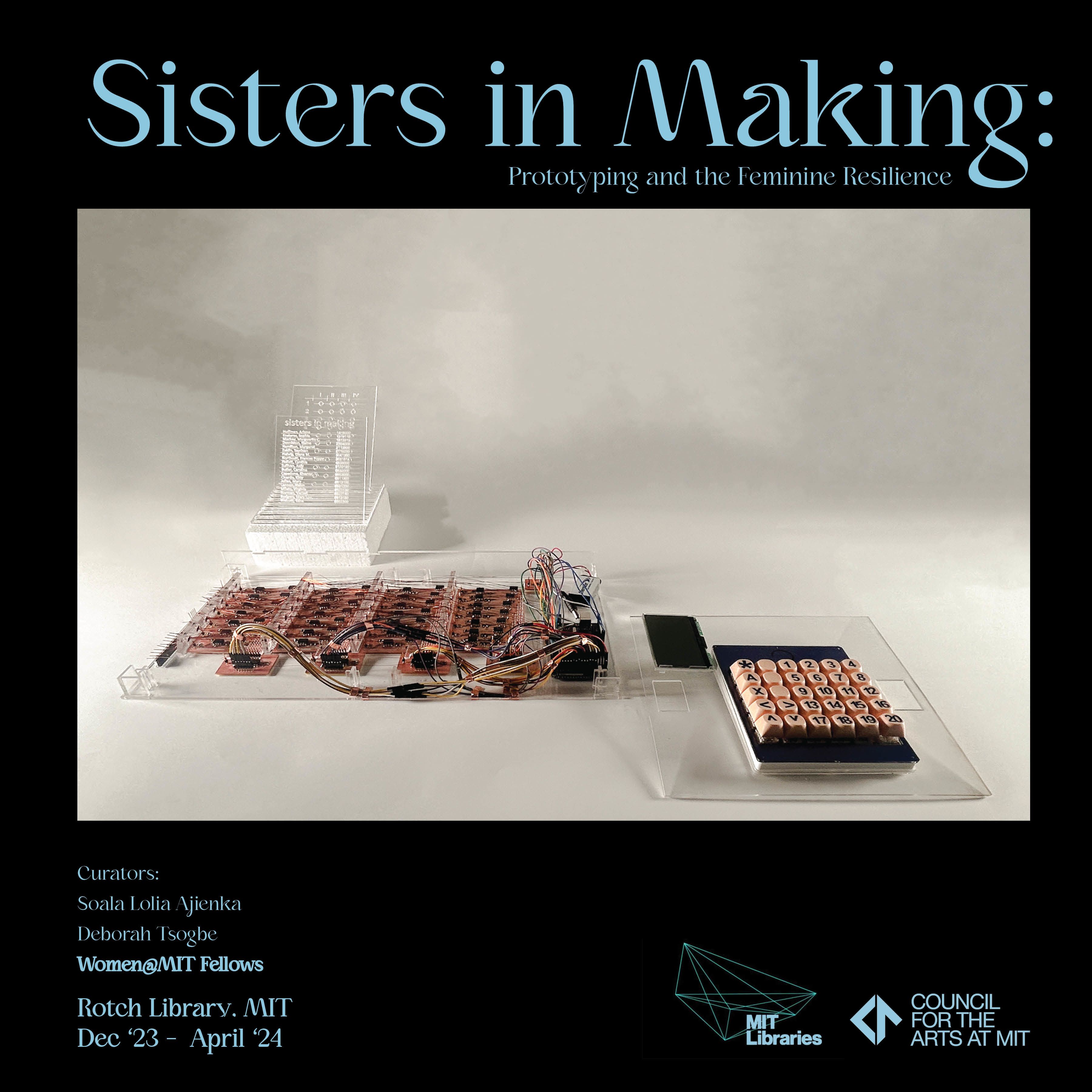
Sisters in Making works to explore and reveal the multi-level efforts of women surrounding the invention and implementation of Core Rope Memory and Magnetic Core Memory in the Apollo Guidance Computer that put man on the moon in 1969. From their use in early NASA Mars space probes to becoming an integral component of the Apollo 11 Moon Mission, MIT dedicated a tremendous workforce, alongside its commercial and federal partners, to perfecting its implementation of Core Memories.
While we ultimately know the names of the first men on the moon, and of those who spearheaded the engineering initiatives behind the Apollo 11 mission, the names of the countless women who had a vital hand in realizing these feats have been missing from historical discourse. As such, the focus of our work has been to uncover the names and faces of these women, who held important positions including overseeing communications, checking codes, running calculations, and weaving memory.
Through weaving this network of women into a physical instance of Rope Memory, and curating archival images, we amplify the importance of this overlooked part of history. We ask - how can we shift narratives of femininity to include the resilience and care necessary to produce such highly sensitive prototypes as electronic inventions require?
Opposite
Poster for the Sisters in Making Exhibition at he MIT Rotch Library Gallery
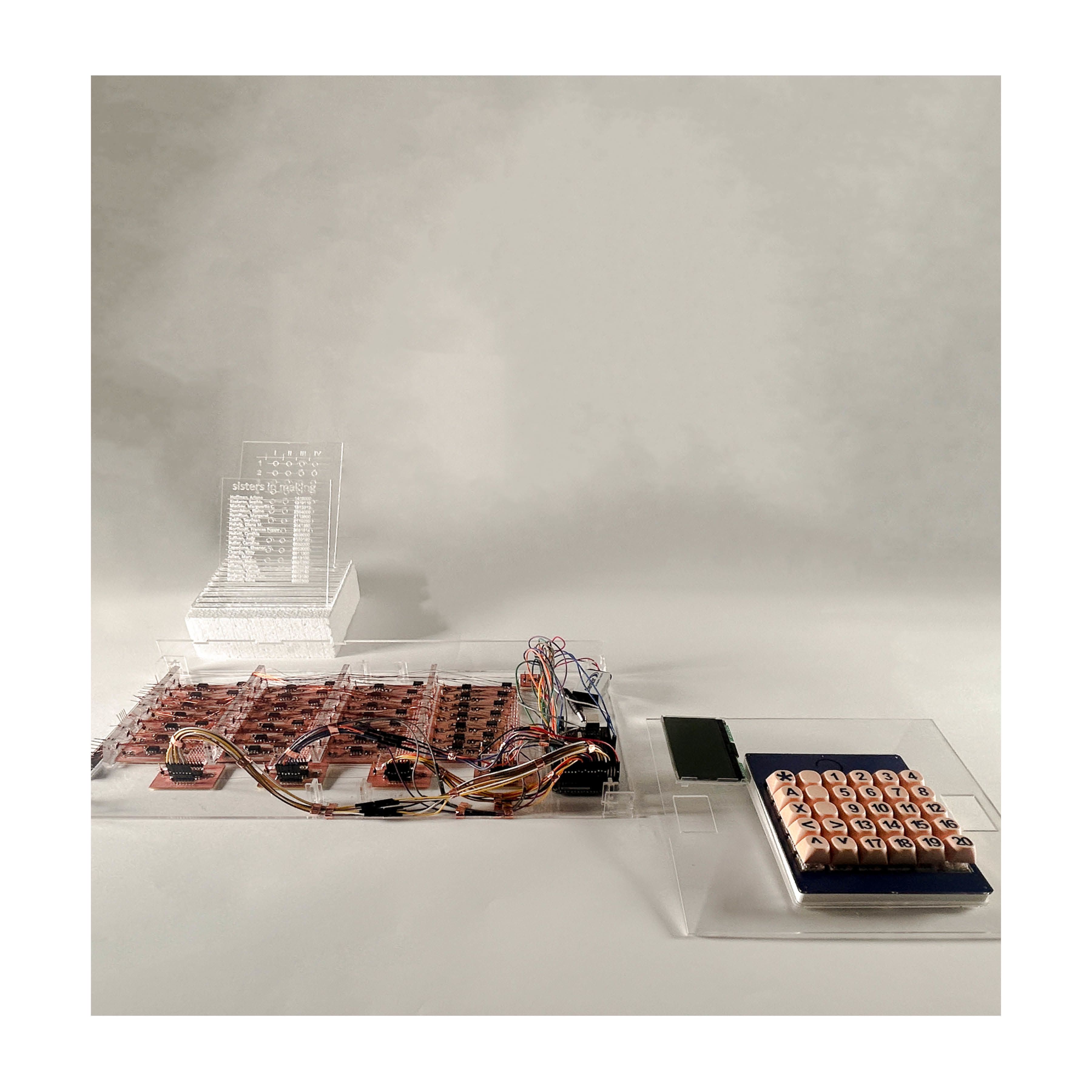
The Memory Dialer
Our efforts to illuminate the work of the original Weavers culminated in the conception and fabrication of a core rope artifact which memorializes their names and positions in the journey to the moon.
Our machine is built upon the logic of the original AGC rope memory and modified to work with modern microcontrollers. With 28 core transformers, it holds 160 bits of information - 40 “words” of 4 bits each being carried along the copper wires to the internal logic of the microcontroller. These words are 7 digit numbers tied to the identities of 20 women who we uncovered throughout our research. These women were technicians, data keypunchers, engineers, librarians and office staff from MIT, Raytheon, and NASA.
The memory dialer is an homage to not only the original core rope memory of the Apollo Guidance Computer and its interface, but also to the hope that it represented for a new way of seeing the world.
Opposite:
M(IM) - 1(1), 2023.
The memory dialer
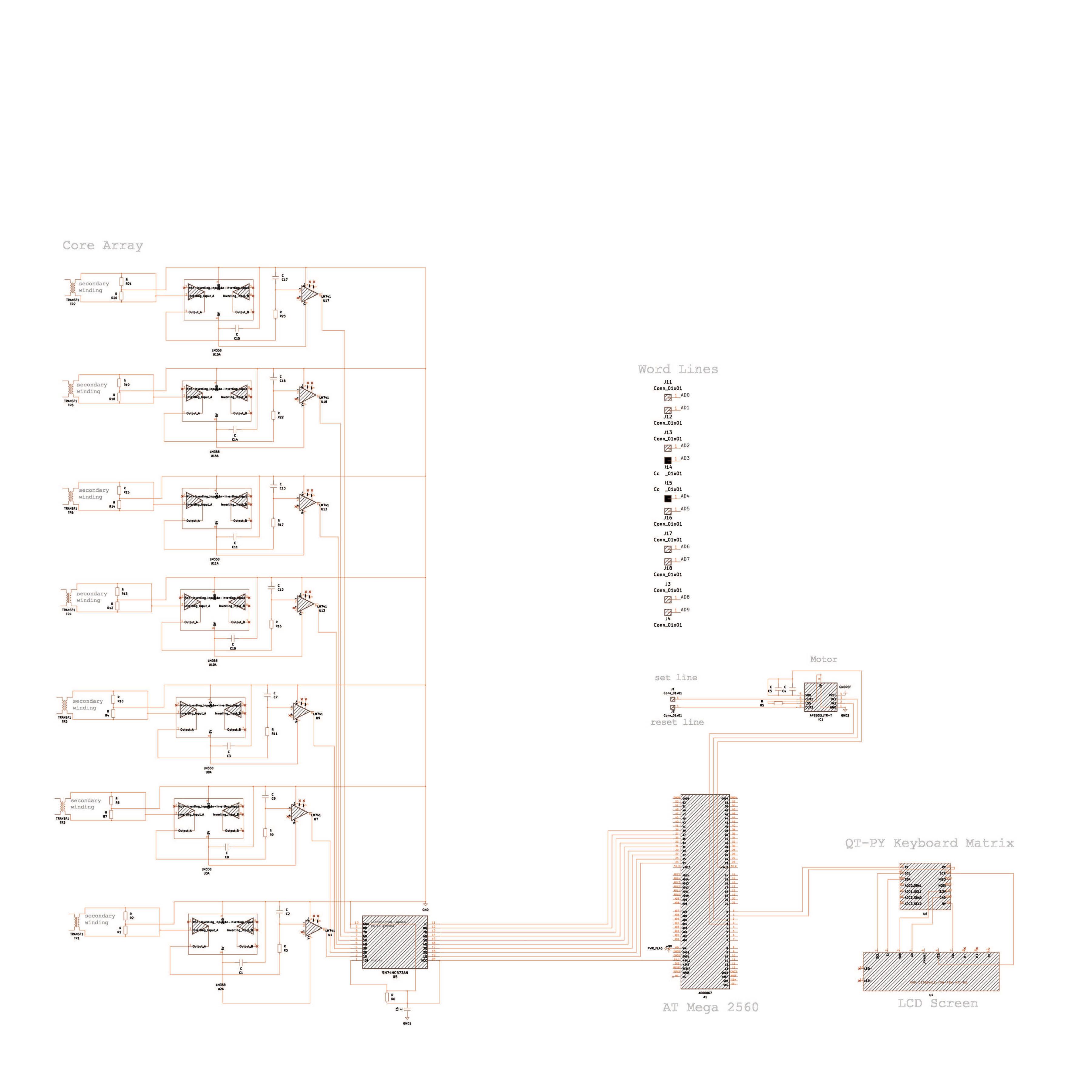
Typical Circuit
This Space Age technology is intended to work with systems accessible to us in our post-digital age. The analog core rope system is wired in circuit to signal amplifiers and logic converters, eventually reaching a modern micro controller unit paired with a keyboard and LCD screen.
In all, the Memory Dialer took 9 circuit boards, 50 pins, 50 jumper cables, hundreds of feet of copper wire, and over 400 hours of labor to come alive.
This schematic depicts the logic necessary for a word line woven through the core array to reach a modern microcontroller. Core Rope Memory is an analog phenomenon - for this woven memory to be read digitally, its signal needs to be amplified and converted from binary to readable input. In this system, when a button is pressed on the keyboard, it sends a signal to the microcontroller to drive current through the system, activating a particular word line, which sends back its stored info. This particular system holds up to 40 word lines - 40 separate remembrances.
Opposite:
M(IM) - 1(13), 2023. Circuit boards for the memory dialer.
M(IM) - 1(3), 2023. A typical circuit in the dialer system.
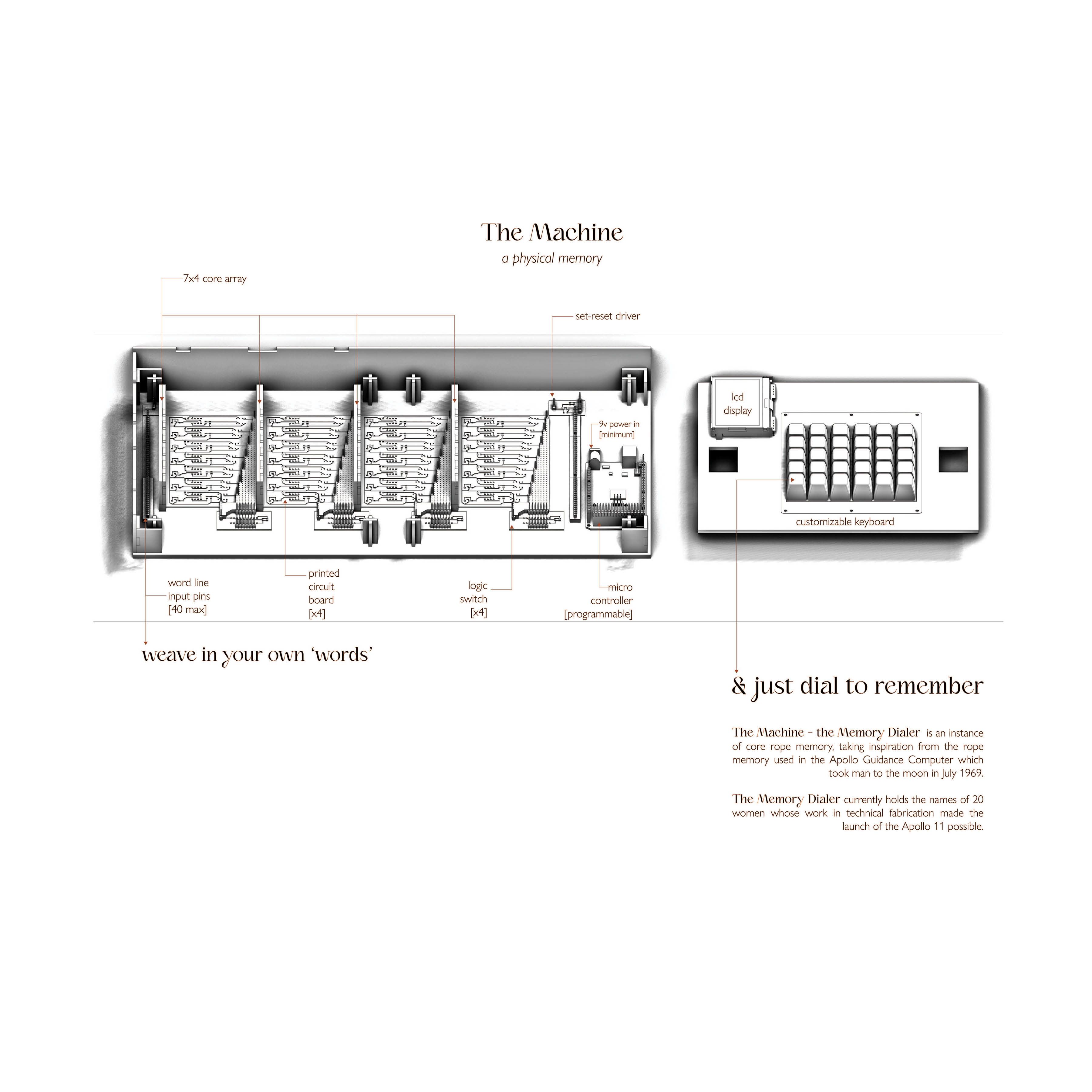
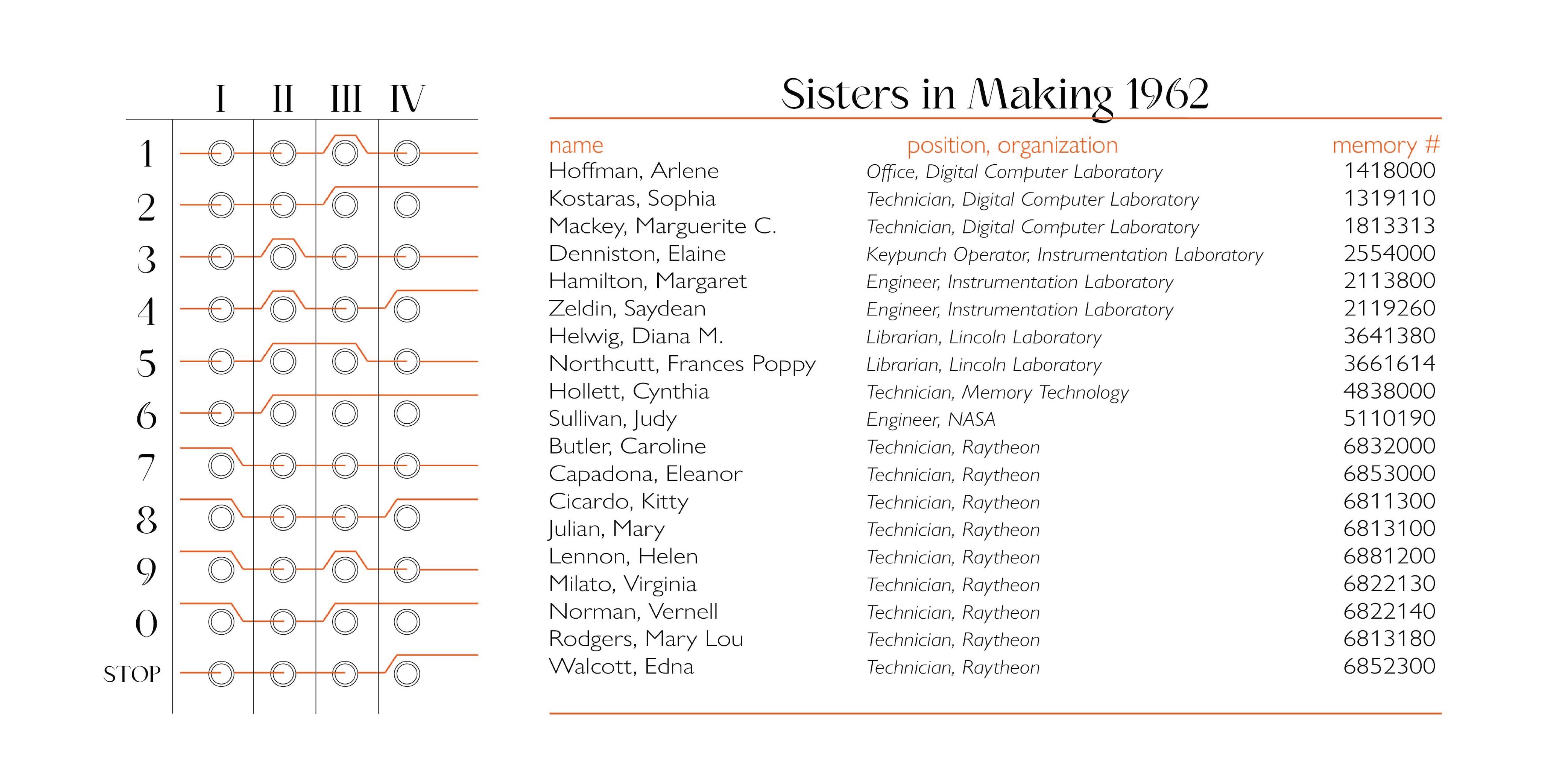
Each woman was assigned a 7 digit code based on her initials, organization affiliation, and position. She is then woven into memory using the code specified above.
The memory dialer is intended to be a living archive. Though core rope is permanent memory, in this modern implementation, you are allowed to write and rewrite as you please. Rewriting here entails snipping the ends of deprecated lines and weaving in new ones. If you run out of space in your memory instance, or want to build a new one, you shouldn’t be afraid to reweave your memory. In this way the artifact can live in perpetuity - as new histories are uncovered, the system can be rewoven, and memories live on.
Opposite:
M(IM) - 1(2), 2023.
A working diagram of the memory dialer
Above ::
M(IM) - 1(3), 2023 -
M(IM) - 1(4), 2023.
A number key for woven digits.
A log of the names encoded into this memory instance.
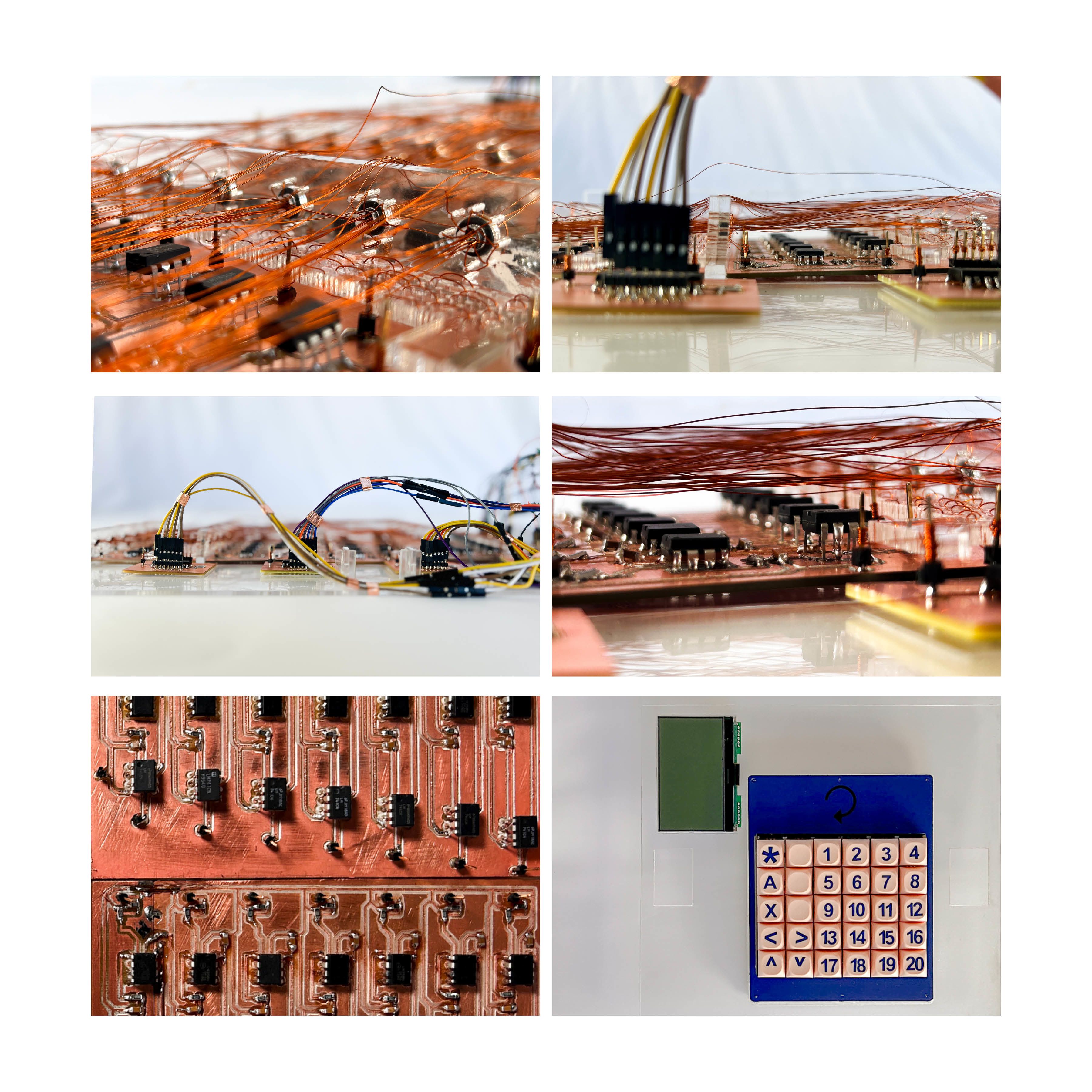
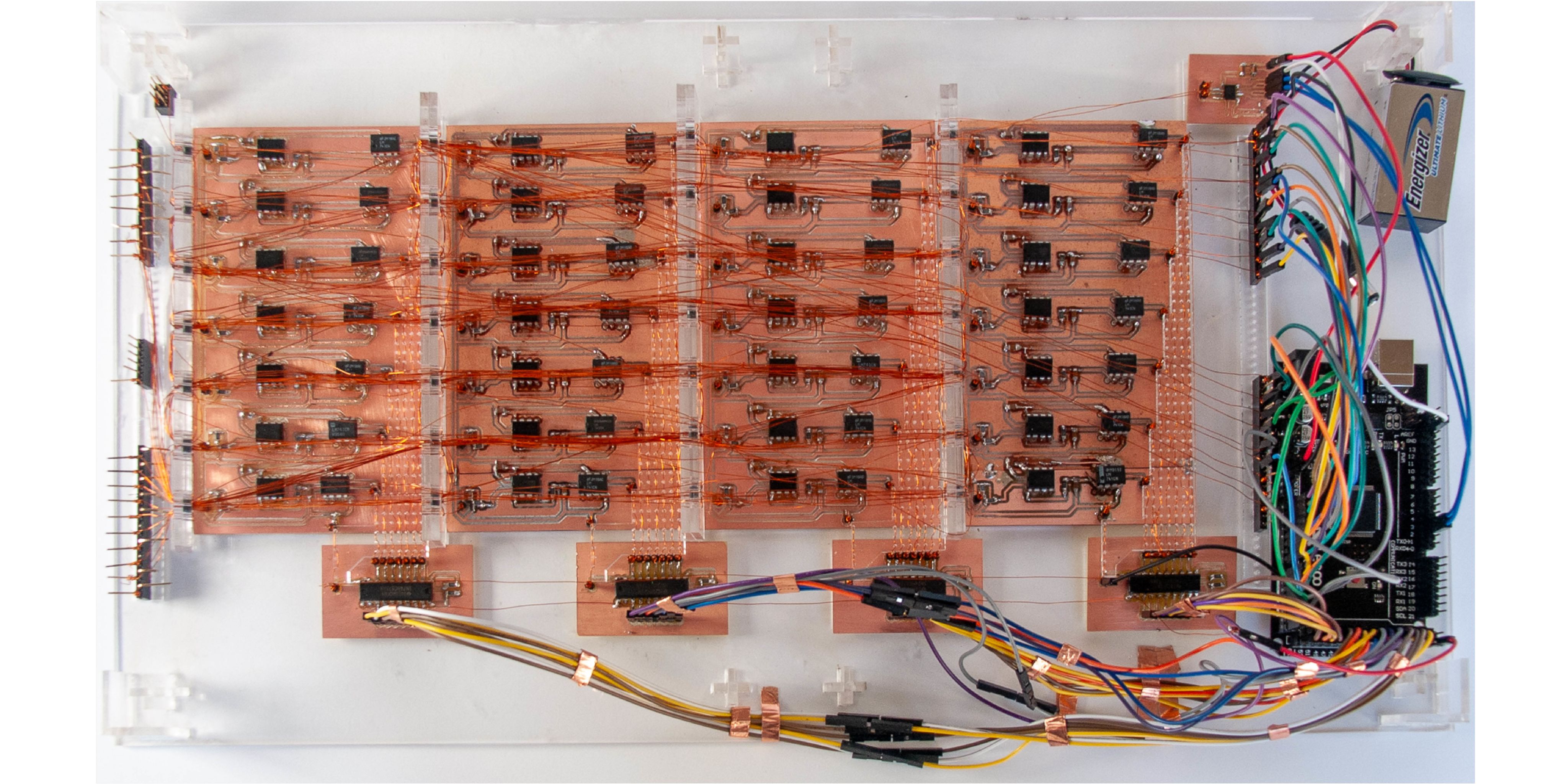
Each copper wire is a memory line.
Each circuit board was custom designed and milled for the machine
Each memory line corresponds to a key press on the board - when someone pushes a button, a name should appear on the screen.
Opposite
M(IM) - 1(7), 2023.
M(IM) - 1(8), 2023
M(IM) - 1(9), 2023
M(IM) - 1(10), 2023
Close shots of wires moving through the core array and their output connections.
Above:
M(IM) - 1(11), 2023. A shot of the dialer’s microcontroller, keyboard, and lcd display
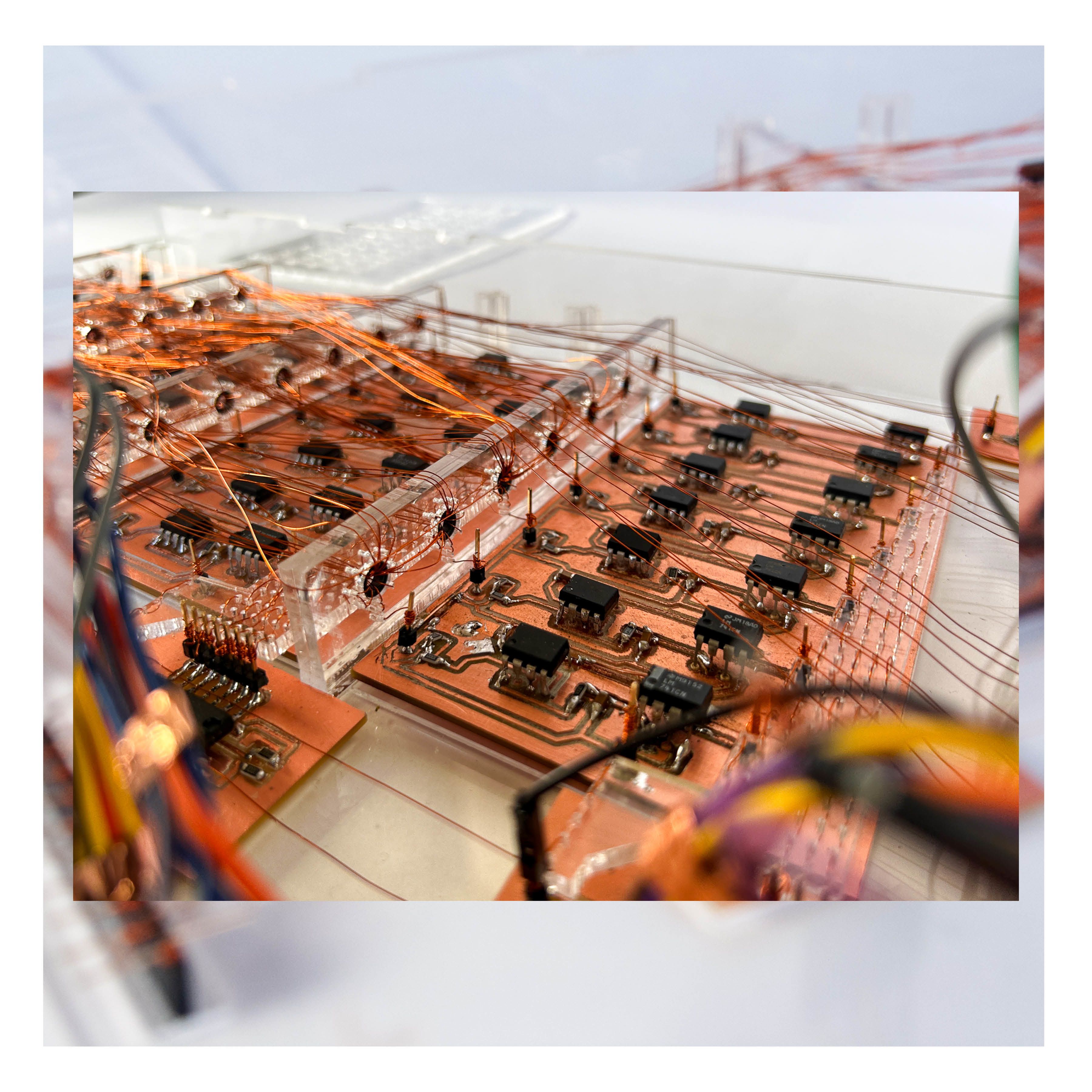
The hours of labor that went into milling circuit boards, placing components, weaving word lines, as well as into the management of code, research, and interpersonal communication to gather materials and coordinate schedules around this machine reminds us of the resilience and mental fortitude required to make the conceptual physical. It reminds us of the feat achieved by the original Weavers, who made something almost impossible, tangible.
Opposite
M(IM) - 1(17), 2023. A close perspective of the memory dialer.
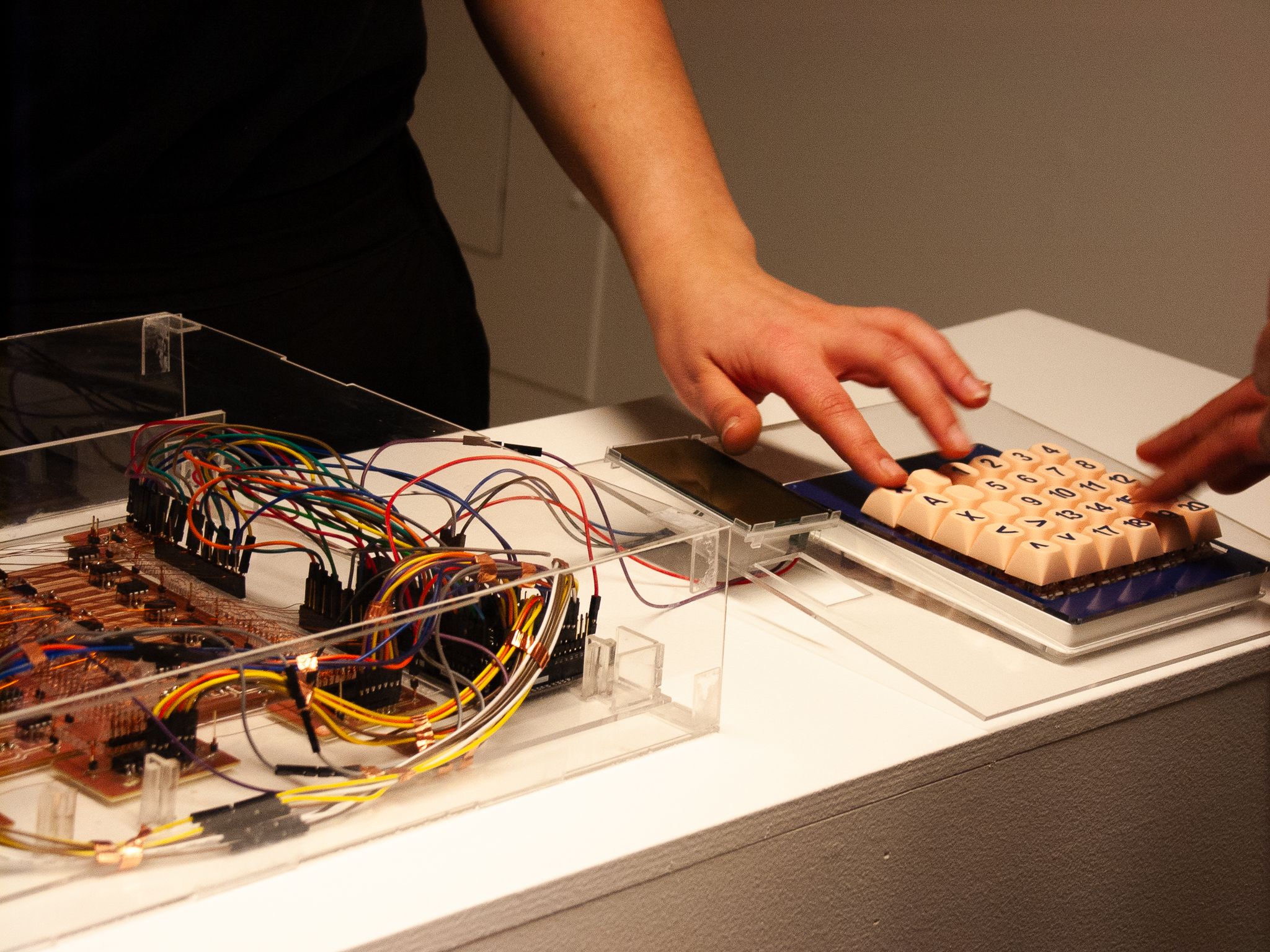
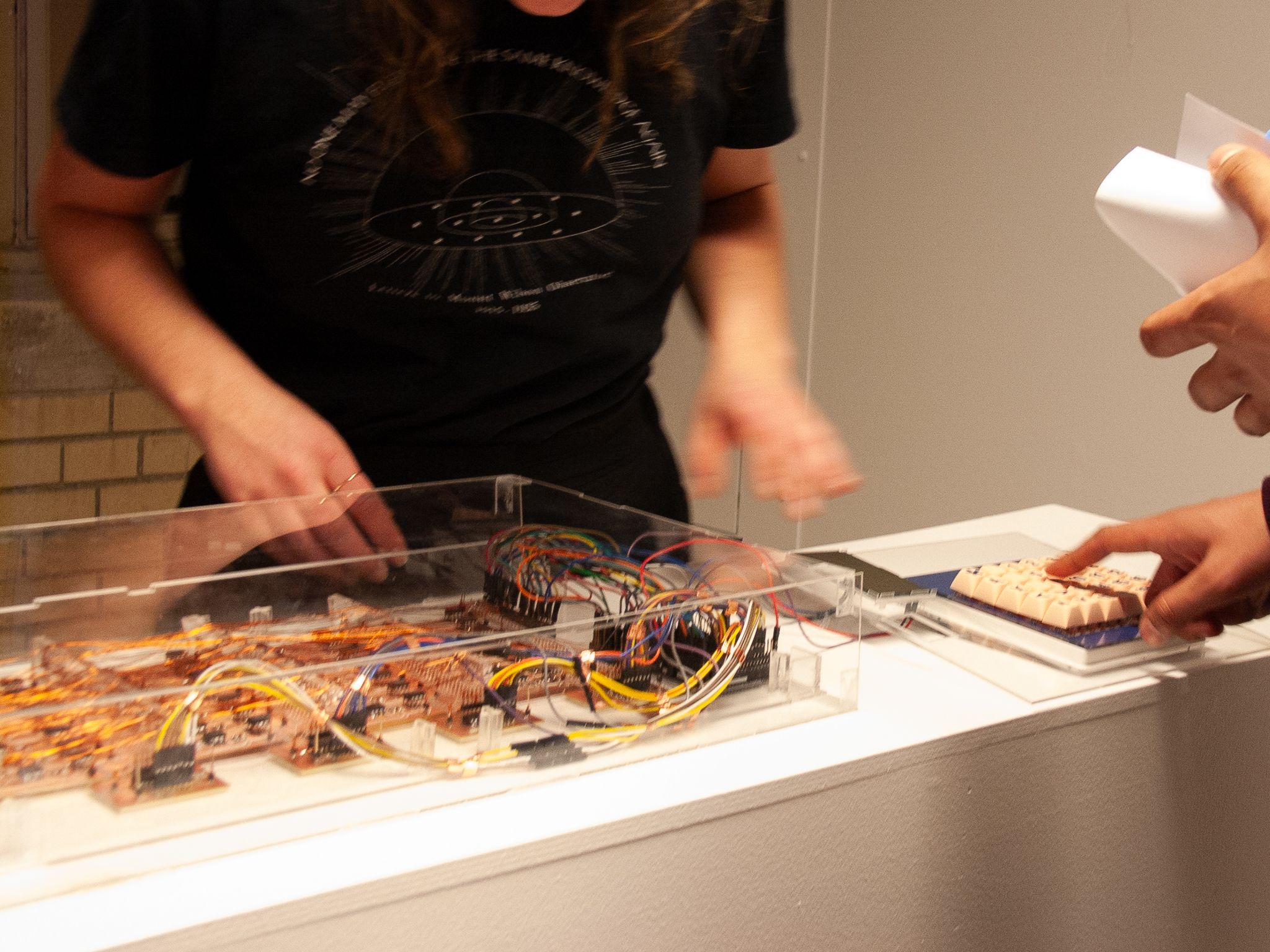
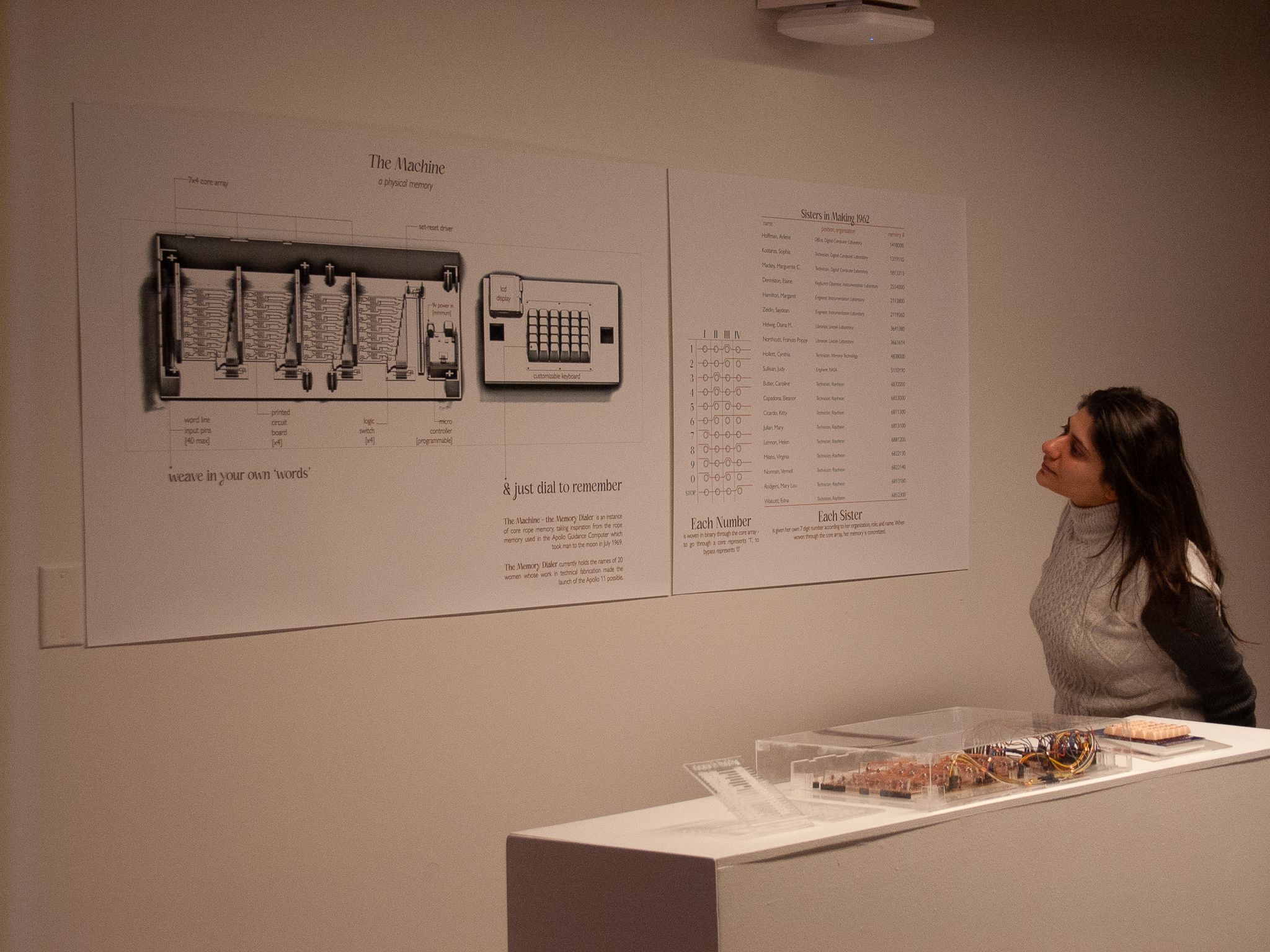
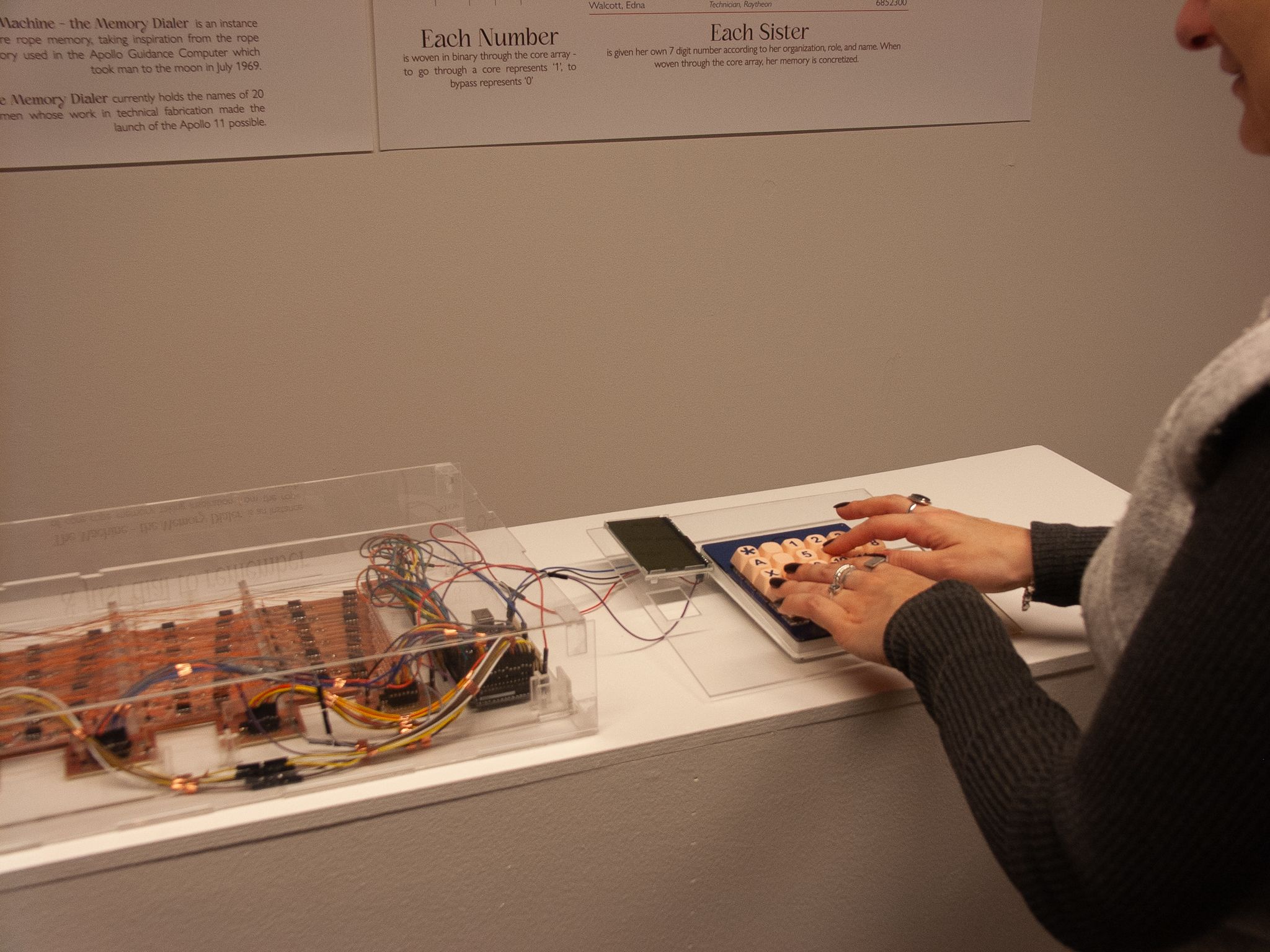
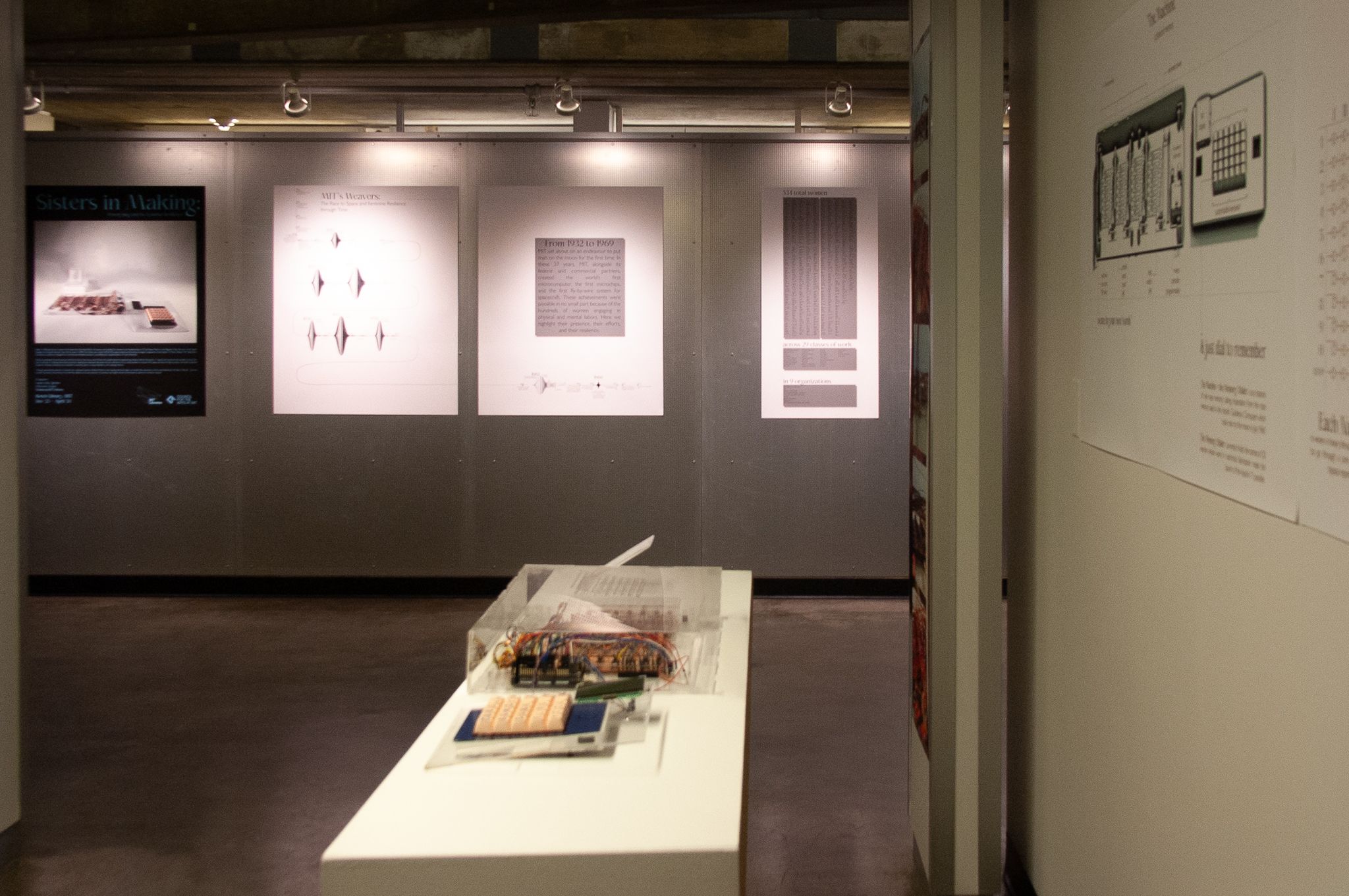
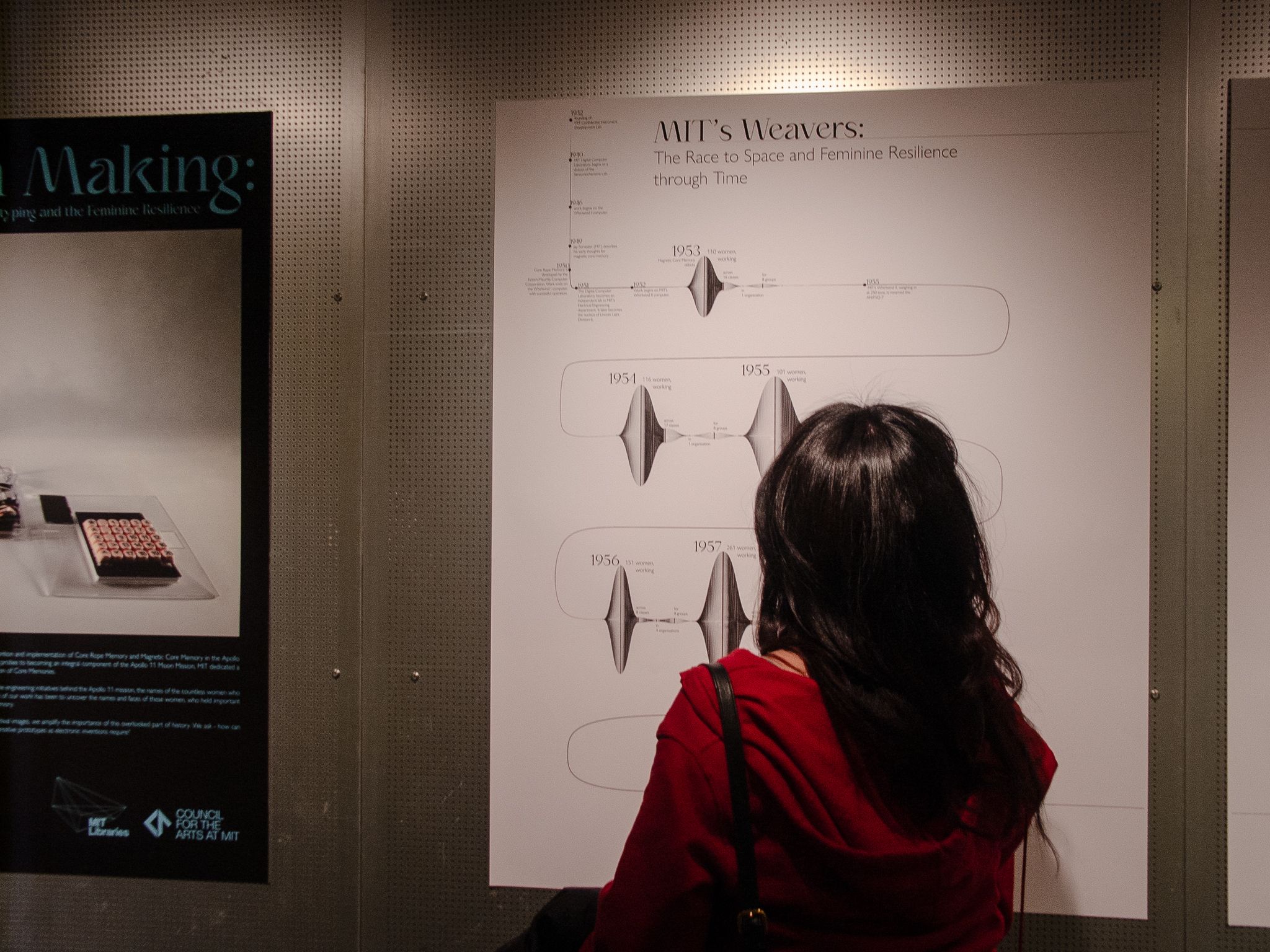
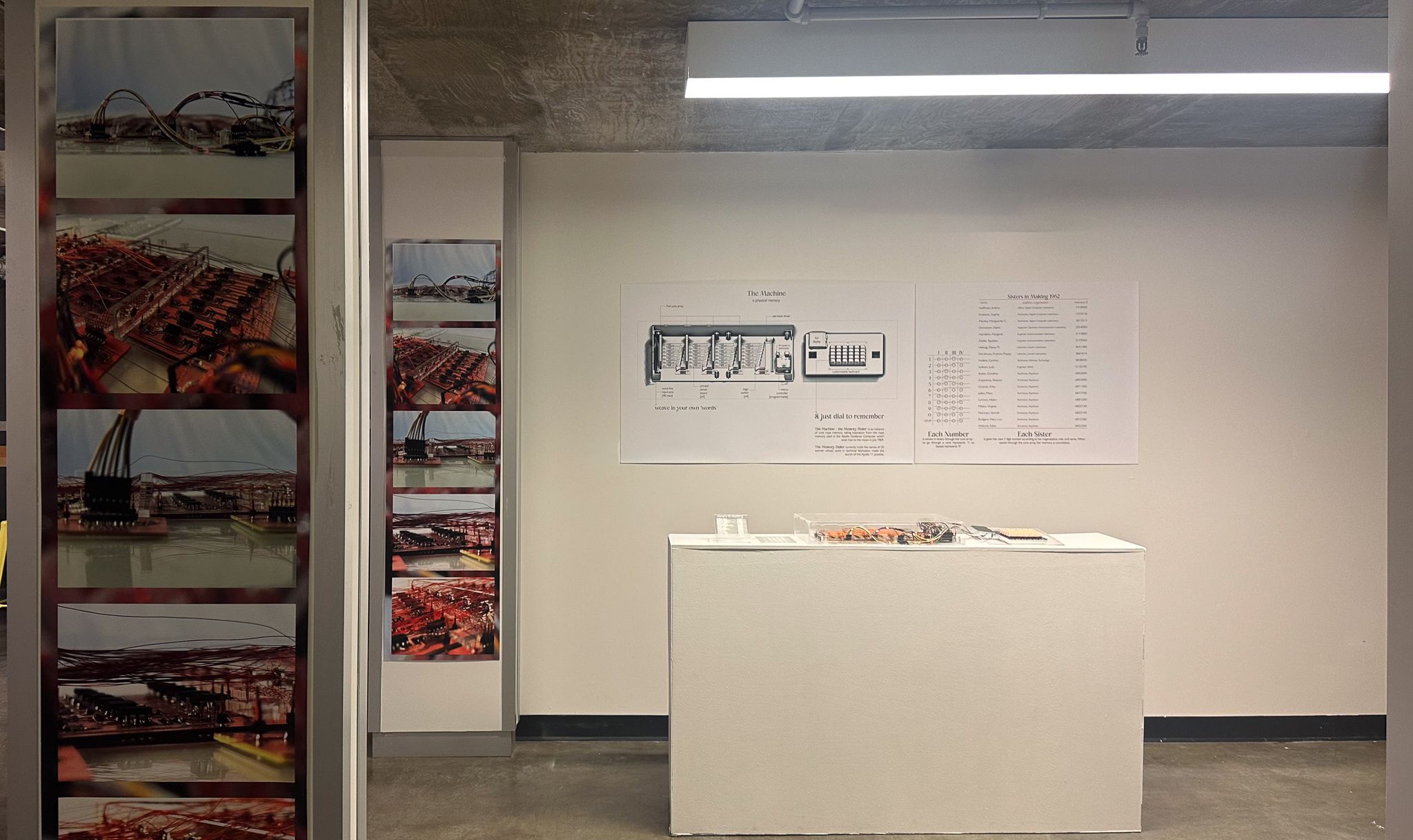
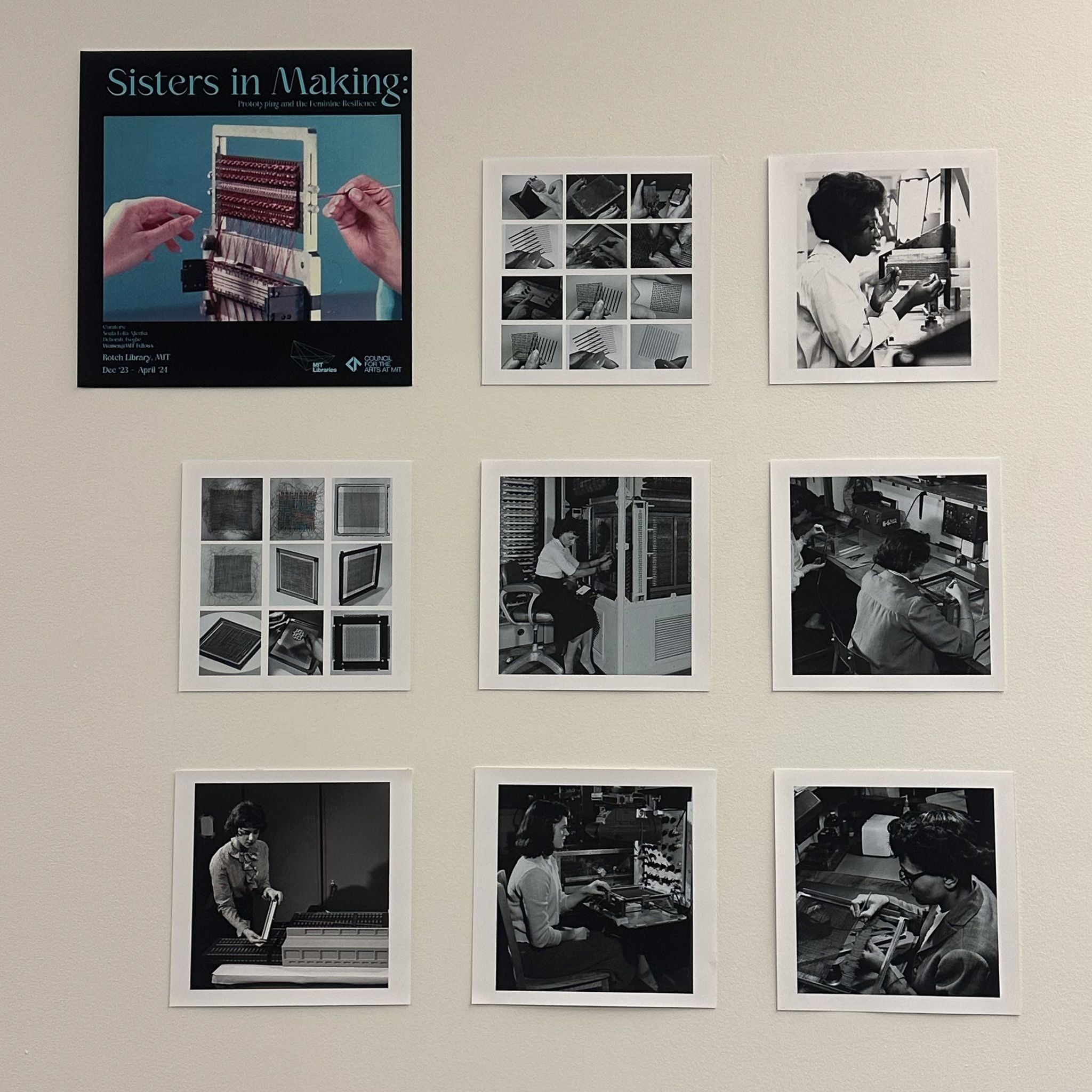
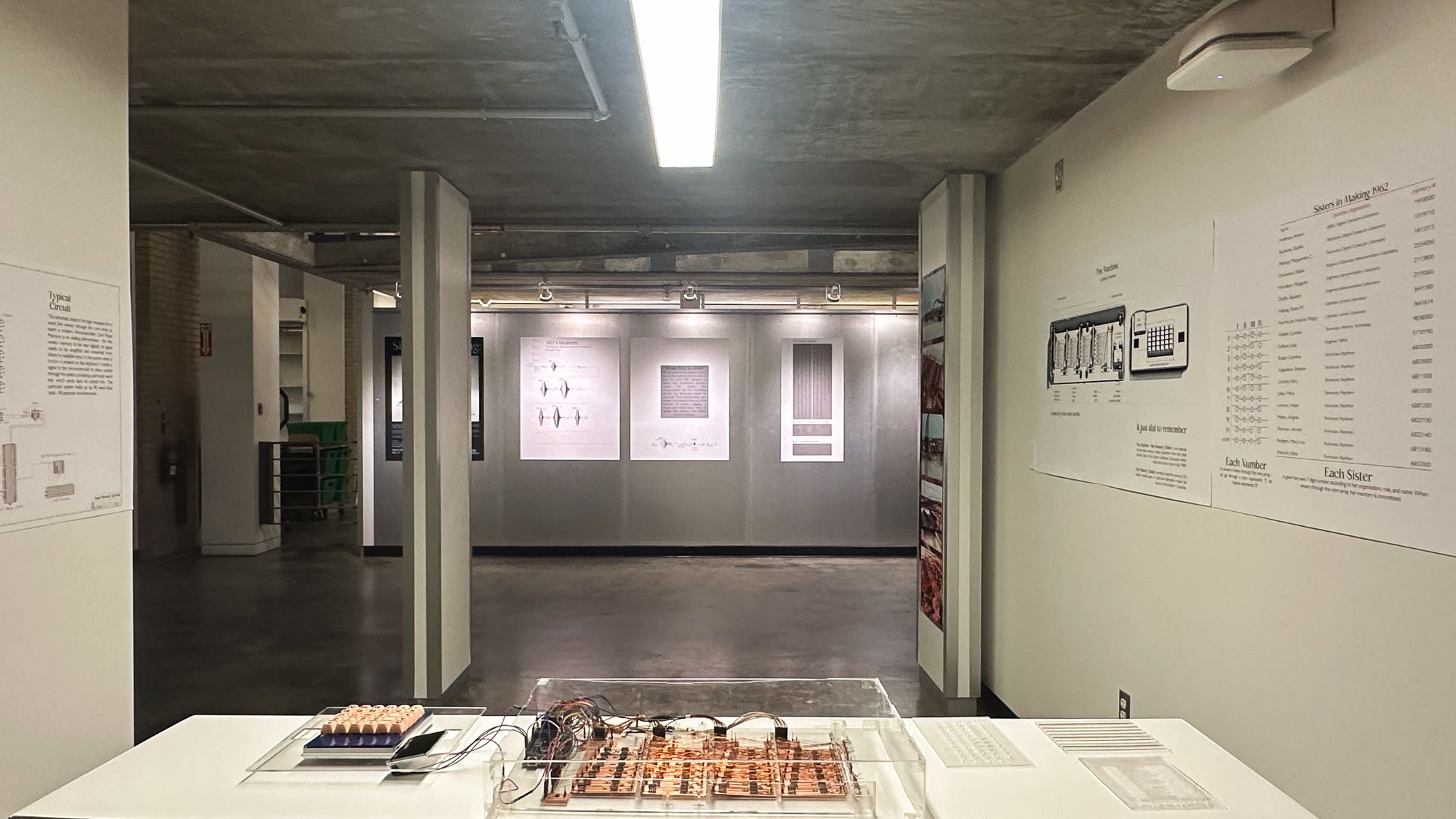
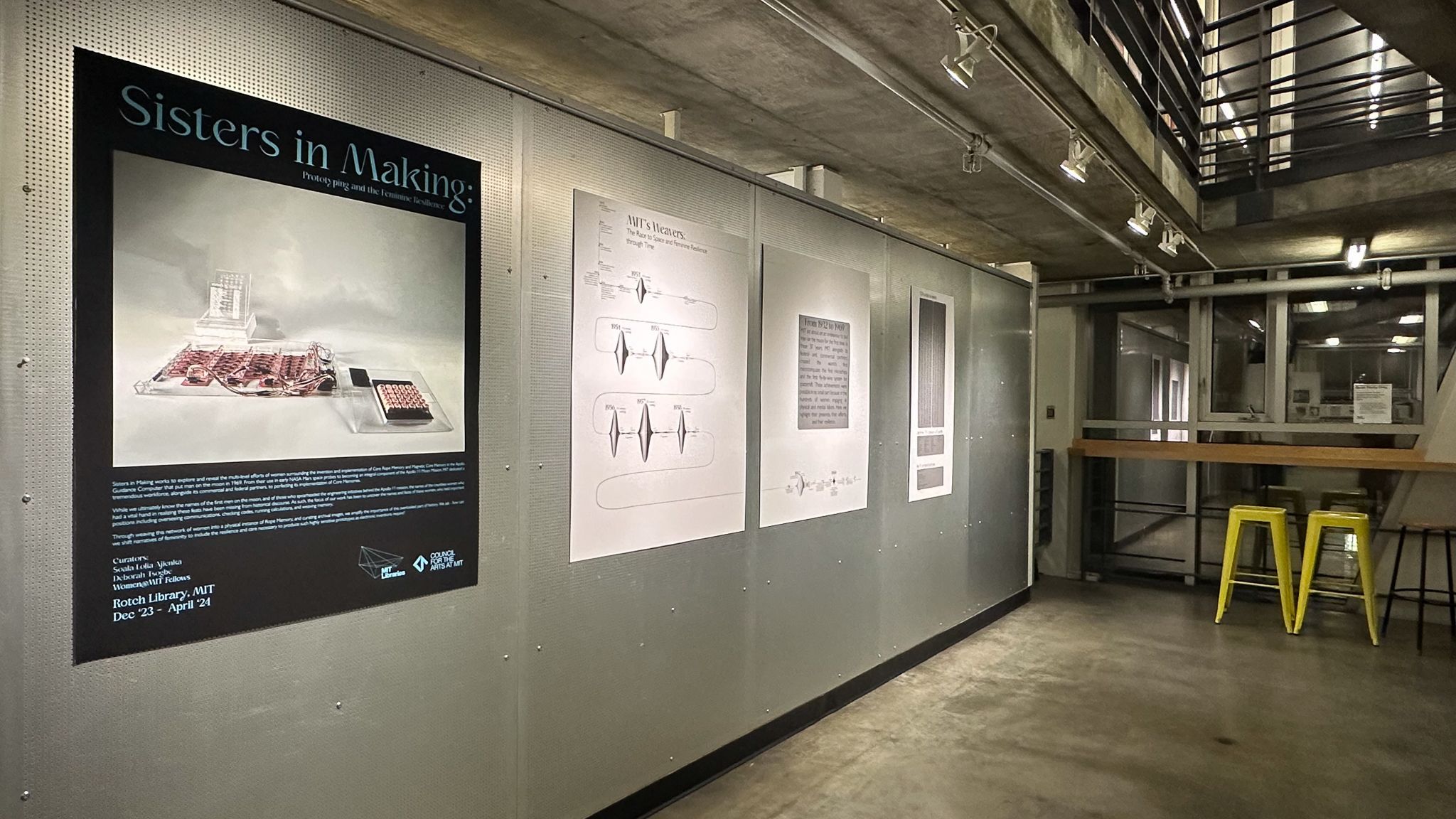
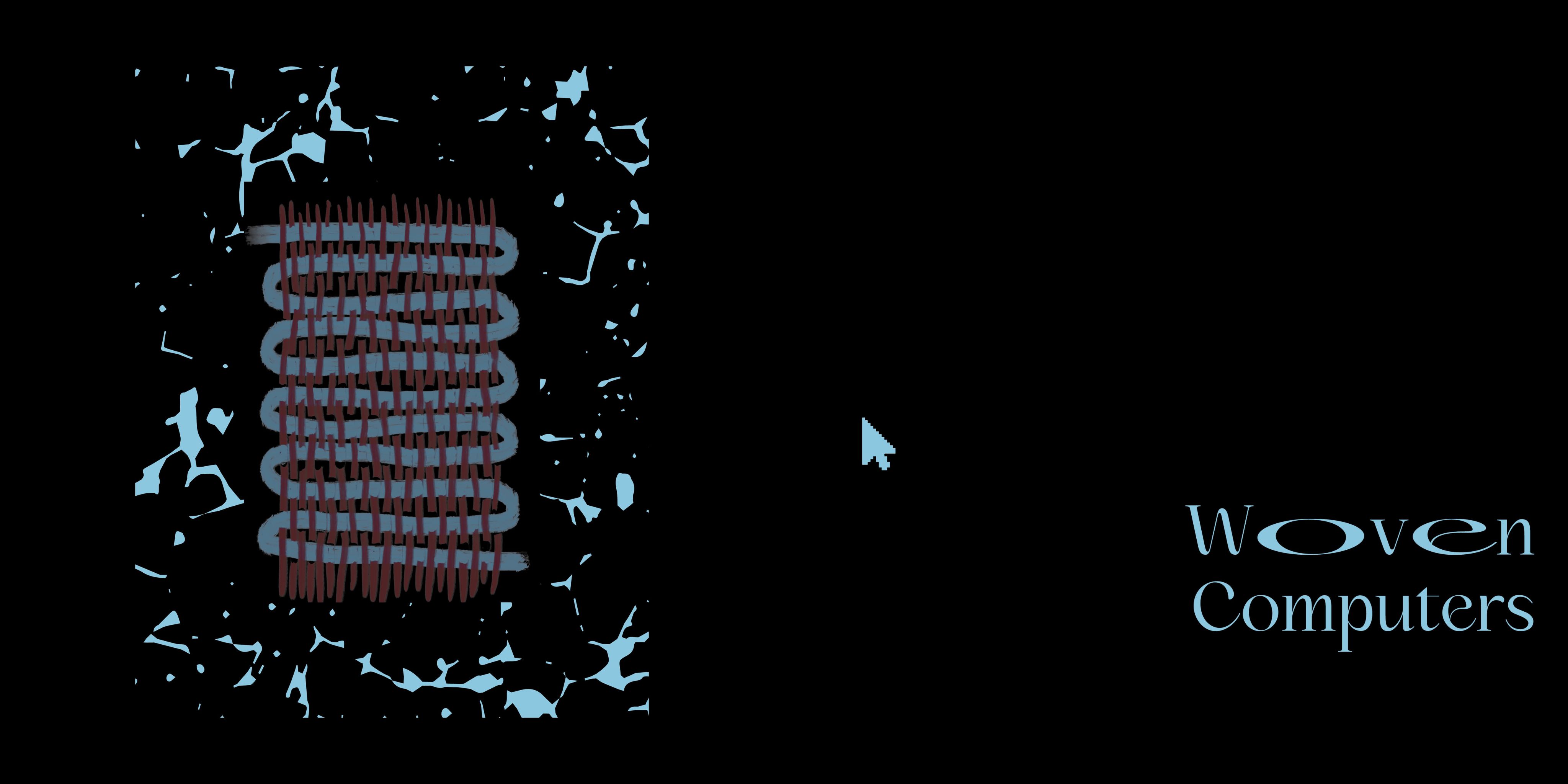
Woven Computers?
The woven core memory of the AGC may seem absurd, but weaving and computing have a rich, intertwined history.The use of punchcards in weaving preceded the concept of machine-readable codes in computing. The Jacquard loom, which used punchcards for complex patterns, was patented in 1804 and Charles Babbage released his plans for the analytical engine in 1843.
As weaving became industrialized, Joseph Marie Jacquard thought to use punchcards to automate the process of alternating the threads on the loom, allowing complex patterns to be woven more efficiently. Later that century, Charles Babbage released plans for his Analytical Engine - the first modern computer design. Ada Lovelace remarked that “The Analytical Engine weaves algebraic patterns, just as the Jacquard loom weaves flowers and leaves.”
Left:
E (IM) - 11(1). 1960s, 2019
Aperture Punch Card from the MIT Instrumentation Lab
E(IM) - 18(1), 2019
Series of punchcards for the Jacquard hand Loom in the Textiles Gallery at the Science and Industry Museum
E(IM)- 18(4), 2019
Experimental Punch Cards made by Charles Babbage during his work on calculating machines
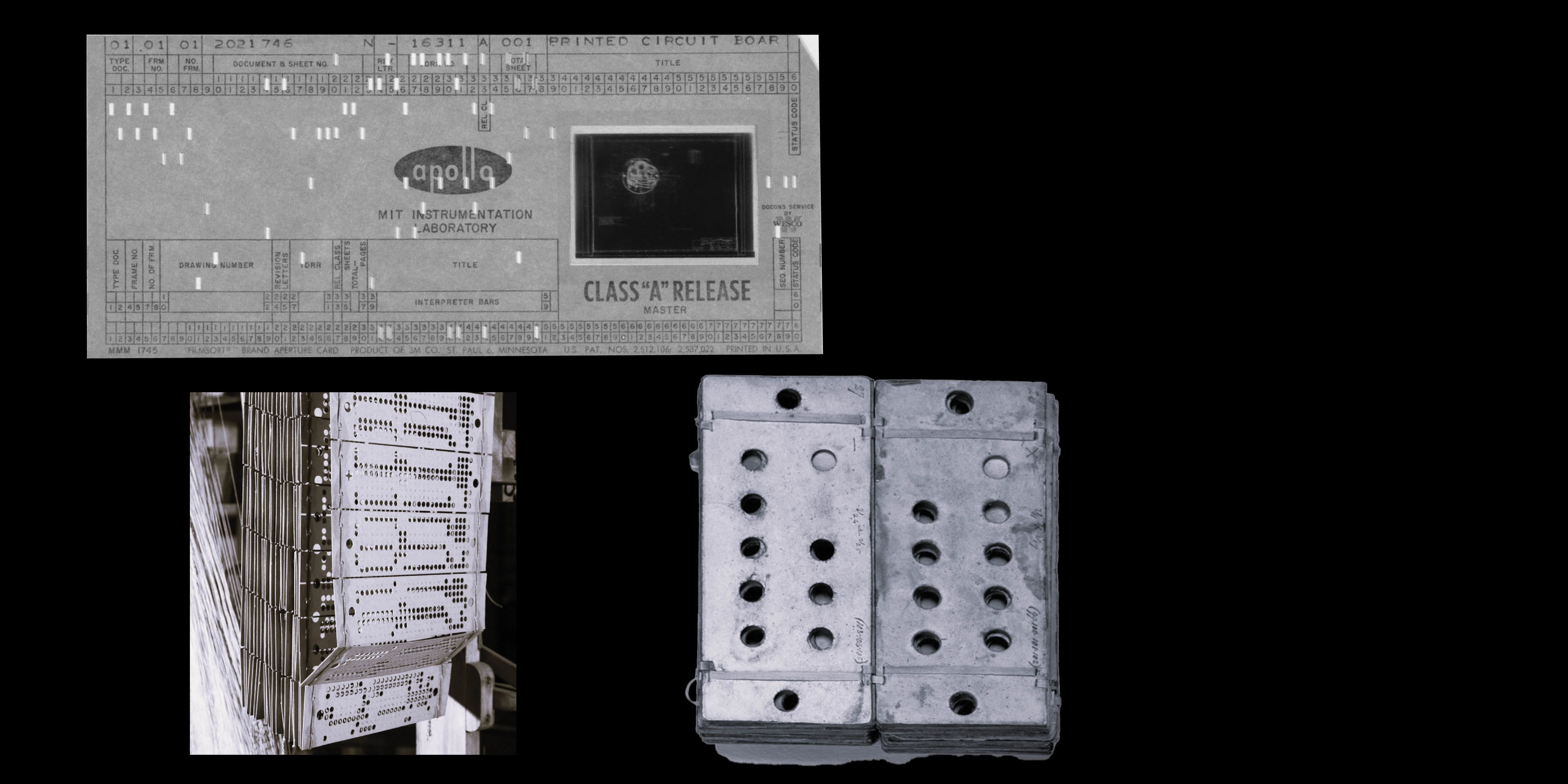
The concept for binary code was born from the dash-dot notation used by weavers to represent the interlacing of threads in a specific pattern. Looking at a plain weave, for example, it’s easy to see the “on” “off” pattern of the warp and weft and translate that to 1s and 0s. In this way, weavers could use binary code to create complex patterns long before computers came about.
Babbage had a vision of a machine that would receive instructions from punch cards to carry out mathematical equations. Ada Lovelace took it a step further by proposing that the numbers manipulated by the machine would represent not just quantities, but any data - essentially proposing what we know now as computer programming
Though the Analytical Engine was never realized, the ideas of Lovelace and Babbage are the underpinnings of modern technological development.
Left:
E (IM) - 9(1). 2023
Plain weave, with warp and weft labeled
E(IM) - 9(2), 2023
Example of binary application to pattern of plain weave
E(IM) - 9(4), 2023
Charles Babbage’s Analytical Engine design
